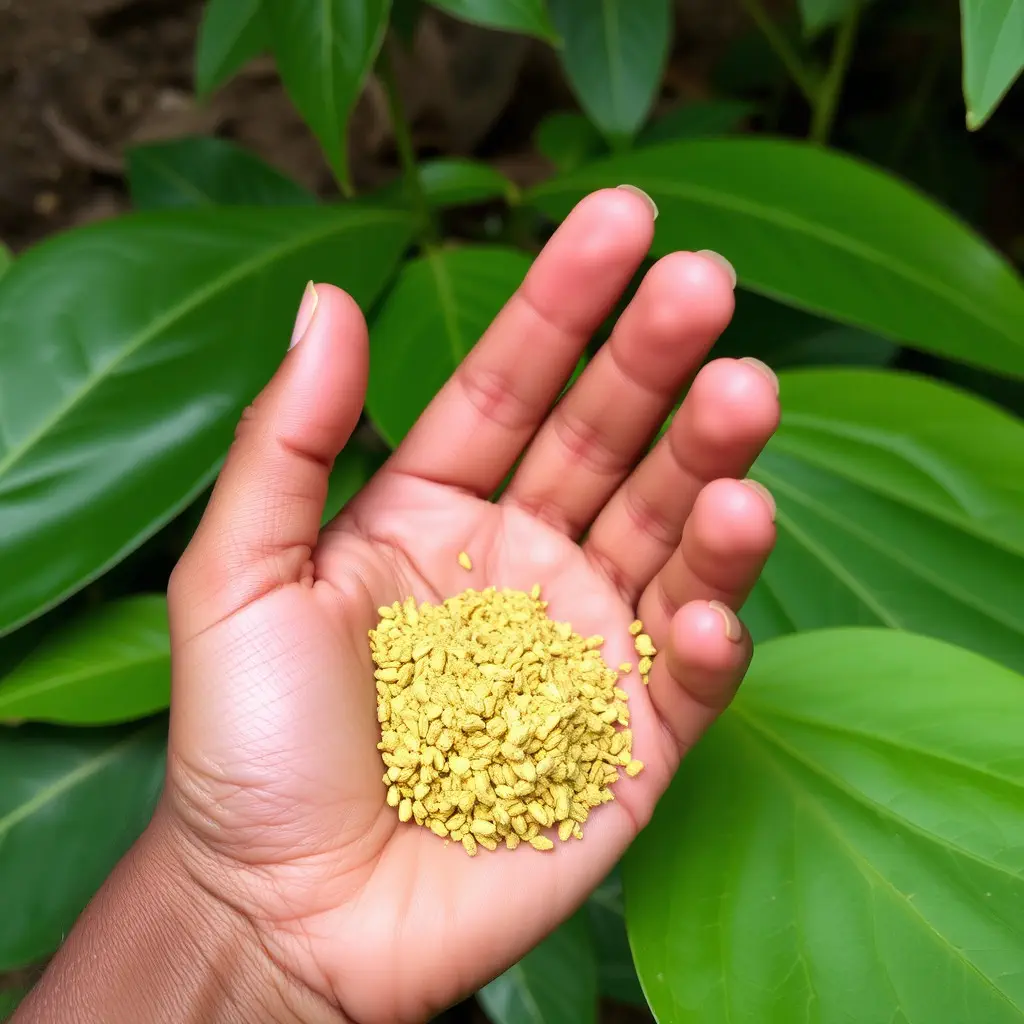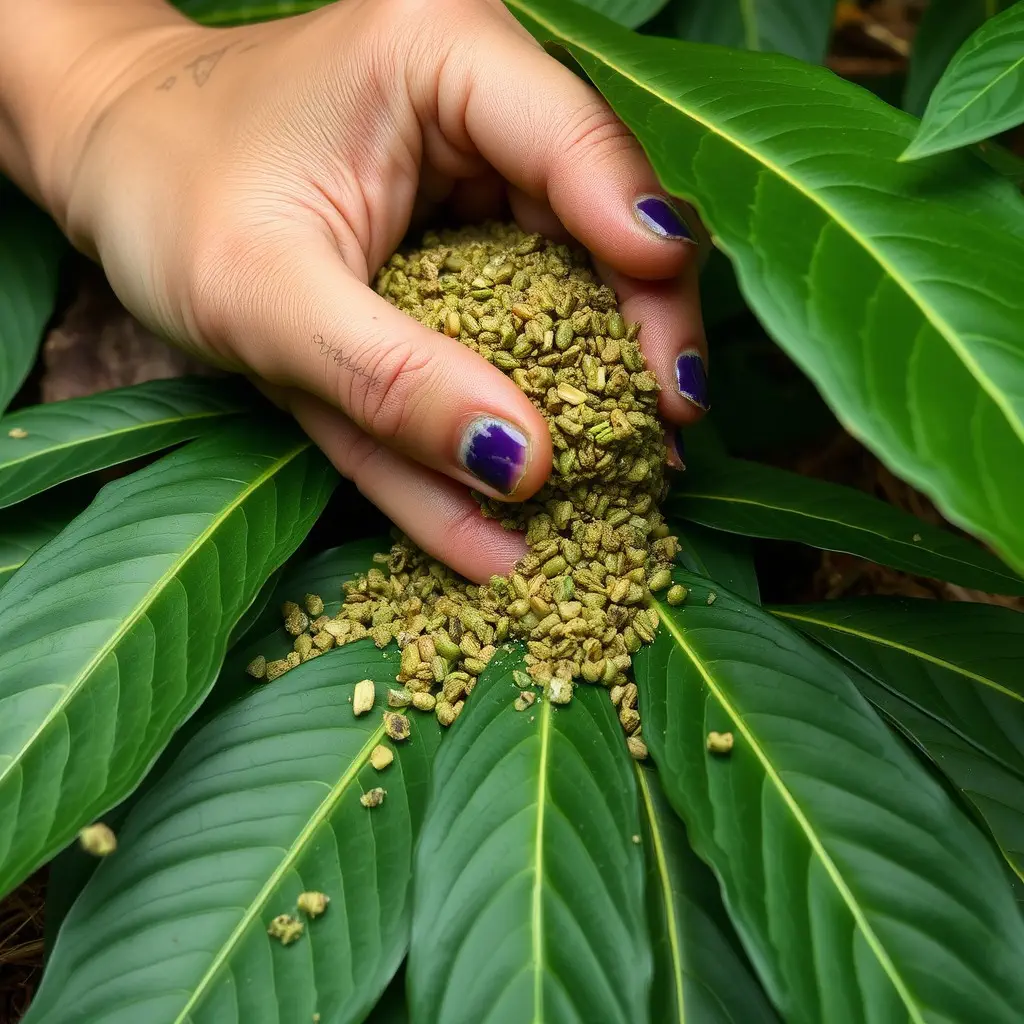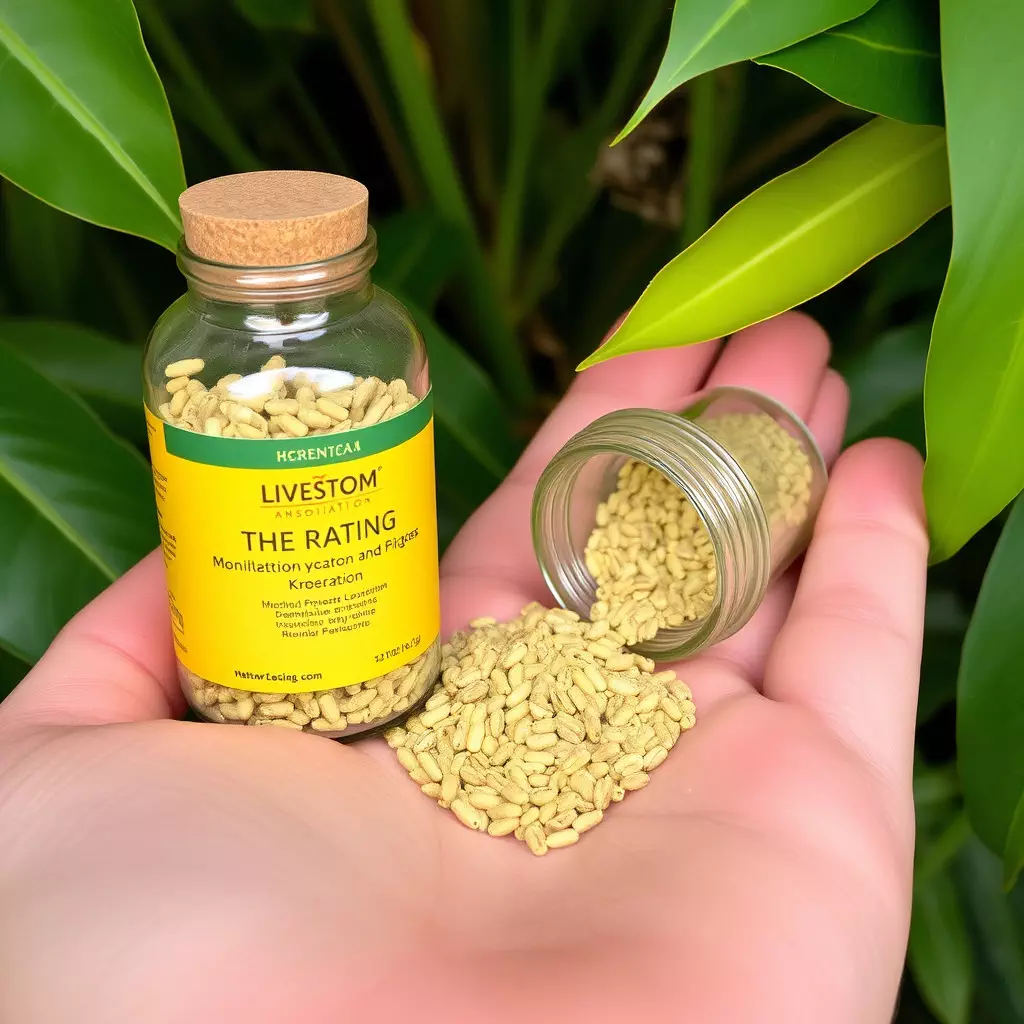Kratom, a plant from Southeast Asia, has gained attention as a potential natural remedy for pain relief due to its alkaloids mitragynine and 7-hydroxymitragynine. These compounds interact with the body's opioid receptors to provide pain-relieving effects that can help manage both chronic conditions like arthritis and fibromyalgia, as well as acute pain from injuries or postoperative recovery. While user experiences vary, initial research suggests kratom could serve as a safer alternative to synthetic opioids, which come with high dependency and health risks. However, its long-term effects and regulatory oversight are still under investigation. As such, those considering kratom for pain relief should consult healthcare professionals to understand its implications and legal status in their region, ensuring responsible usage amid ongoing scientific scrutiny.
Exploring the potential of kratom for natural pain relief, this article delves into how this botanical substance might diminish reliance on prescription painkillers. We’ll uncover the science behind kratom’s active compounds and their role in alleviating discomfort, providing insights into its use as a viable alternative to traditional pharmaceuticals. Join us as we navigate the intersection of herbal remedies and analgesia, offering a comprehensive look at pain relief with kratom.
- Understanding Kratom's Role in Natural Pain Relief
- Kratom's Active Compounds and Their Effects on Pain
- Considering Kratom as an Alternative to Prescription Painkillers
Understanding Kratom's Role in Natural Pain Relief

Kratom, a tropical tree native to Southeast Asia, has garnered attention in natural health circles for its potential role in pain relief. The leaves of the kratom tree contain compounds that can interact with the body’s opioid receptors, providing pain-relieving effects. These alkaloids, primarily mitragynine and 7-hydroxymitragynine, are believed to be responsible for the analgesic properties of kratom, making it a subject of interest for those seeking alternatives to prescription painkillers. Users report that kratom helps manage chronic pain conditions such as arthritis and fibromyalgia, as well as acute pain from injuries or surgeries. It’s important to note the varied experiences with kratom, as individual responses can differ significantly; what works for one person may not have the same effect on another. As research continues to evolve, the understanding of kratom’s efficacy and safety profile in pain relief becomes clearer, offering a natural alternative that could potentially reduce dependency on synthetic opioids and their associated risks. Users are advised to approach kratom with caution, as it requires further regulatory oversight and scientific scrutiny to fully understand its impact on long-term health and pain management.
Kratom's Active Compounds and Their Effects on Pain

Kratom, a tropical evergreen tree native to Southeast Asia, has garnered attention in natural pain management circles due to its potential for pain relief with kratom. The plant’s efficacy is attributed to its active compounds, namely mitragynine and 7-hydroxymitragynine, which interact with the body’s opioid receptors. These alkaloids are believed to produce analgesic effects, offering relief from various types of pain, including chronic and acute discomfort. The precise mechanisms by which kratom exerts its pain-relieving properties are still under scientific scrutiny, but preliminary studies suggest that these compounds may influence neurotransmitters like serotonin and norepinephrine, which play a role in mood regulation and pain perception. This dual action on both pain and mood may contribute to the plant’s popularity as an alternative to traditional pharmaceuticals for managing pain without the risk of severe side effects or addiction associated with prescription opioids. As research continues, the potential for kratom to offer effective pain relief while reducing dependence on synthetic medications is becoming increasingly recognized.
Considering Kratom as an Alternative to Prescription Painkillers

Kratom, a tropical tree native to Southeast Asia, has gained attention in discussions surrounding alternative approaches for pain relief. The leaves of kratom contain compounds that can interact with the body’s opioid receptors, potentially offering analgesic effects. Users often report that kratom helps alleviate various types of pain, ranging from chronic to acute discomfort. Unlike traditional prescription painkillers, kratom is available in various forms, including dried leaves, capsules, and powder, which can be tailored to individual preference and dosage needs. Proponents argue that it may serve as a viable alternative for those seeking relief from pain without the risk of dependency associated with long-term use of opioid medications. However, it’s crucial to approach the use of kratom with caution, as its efficacy and safety profile are still under scrutiny by regulatory bodies and researchers alike. Users considering kratom for pain relief should consult healthcare professionals to ensure safe and appropriate use, particularly given the current regulatory status surrounding its availability and legality in different regions.
Kratom has emerged as a potentially significant alternative for pain management, offering a natural avenue for those seeking relief without the reliance on prescription opioids. Its active compounds, mitragynine and 7-hydroxymitragynine, contribute to its analgesic properties, making it a subject of growing interest in the realm of natural pain relief solutions. While further research is warrantded to fully understand its efficacy and long-term effects, the potential benefits of using kratom as an alternative to traditional painkillers are promising. As such, it’s clear that this plant warrants a closer examination by both researchers and individuals looking for effective pain relief with kratom. The implications for public health could be significant, offering a safer option that might mitigate the risks associated with opioid use.






